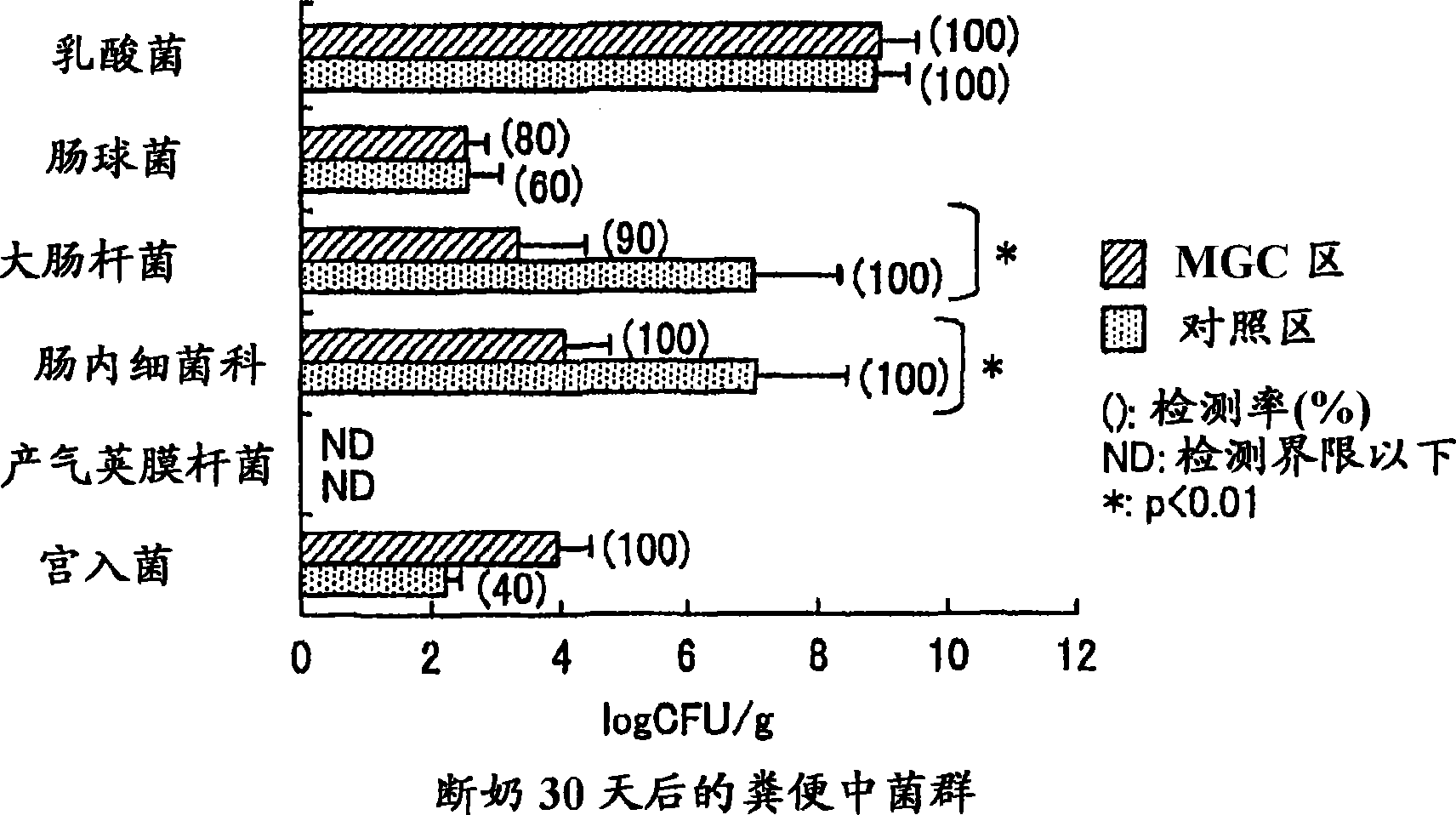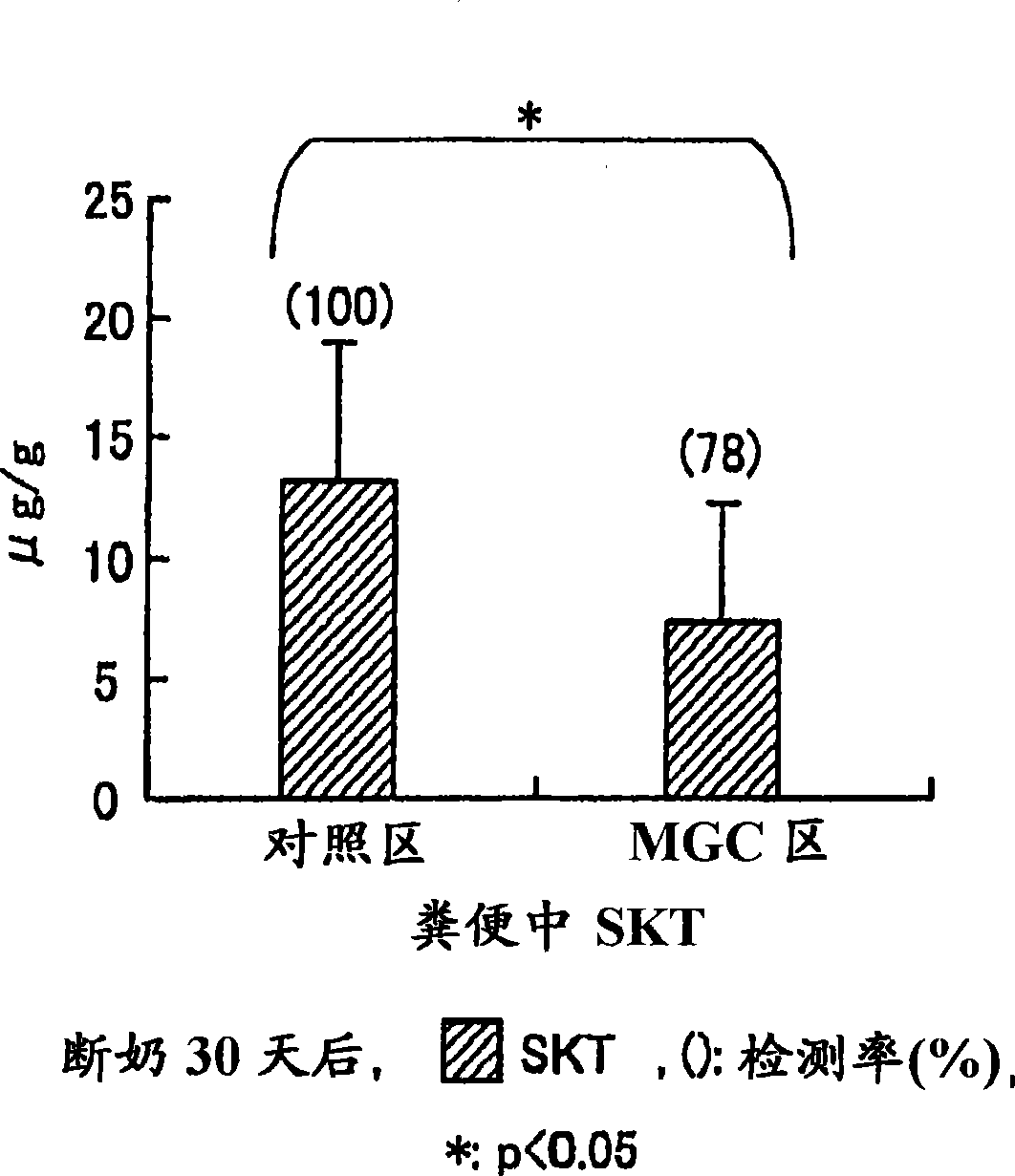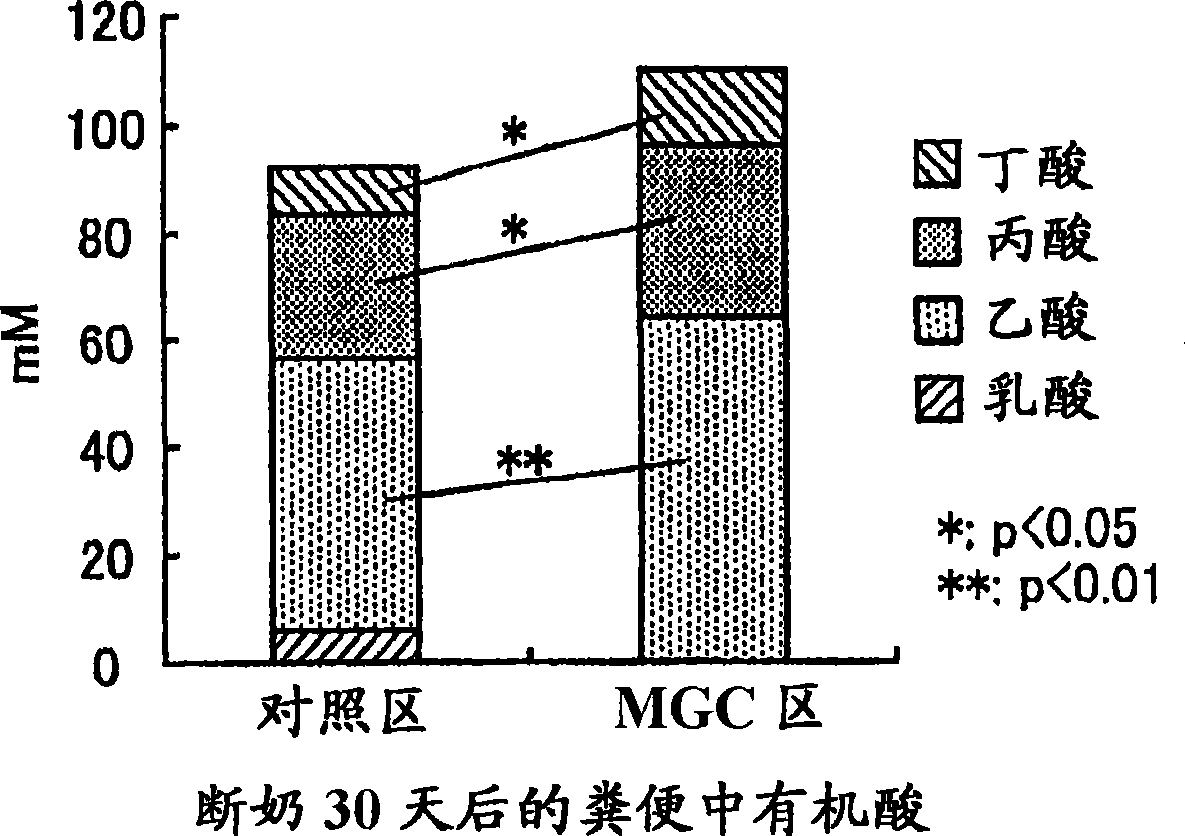Composition for beverage or food
A technology of composition and diet, applied in the direction of food science, drug combination, application, etc., can solve the problem that the production of butyric acid is insufficient to improve the intestinal environment, so as to improve the production capacity of butyric acid, increase the content of butyric acid, reduce The effect of spoilage
- Summary
- Abstract
- Description
- Claims
- Application Information
AI Technical Summary
Problems solved by technology
Method used
Image
Examples
Embodiment 1
[0071] Mix 5% (weight) of cellooligosaccharides (96% (weight) of cellobiose, 2% (weight) of glucose, 2% (weight) of cellotriose) in the feed water, and freely consume the above food for 3 days ICR mice (body weight about 30g) are each 1.0×10 8 Individuals were given Clostridium butyricum MIYAIRI 588 (FERM BP-2789) orally. The animals were slaughtered 3 hours and 6 hours later, all the digestive tracts were removed, and the number of viable Clostridium butyricum MIYAIRI 588 in the contents was measured using GAM plate medium in an anaerobic glove box. It should be noted that the same operation was performed for the control system that did not take cellooligosaccharides. The results are shown in Table 1.
[0072] [Table 1] Changes in bacterial count
[0073]
[0074] From Table 1, it can be seen that the number of bacteria in the cello-oligosaccharide ingested animal was higher than that of the control. In particular, the increase rate of the number of bacteria relative to...
Embodiment 2
[0076] Wistar male rats (7 weeks old) were pre-fed for 7 days with cornstarch as a carbohydrate source standard diet (refer to the control in Table 2) to adapt to the experimental environment, and select individuals with no abnormalities, group 1 8 only for experiment. Using the feed of the composition described in Table 2, the cello-oligosaccharides (96% (weight) of cellobiose, 2% (weight) of glucose, 2% (weight) of cellotriose) were separately given to the zone (9% (weight) )), butyric acid bacteria and cellooligosaccharides are combined with the administration area (9% (weight) of cellooligosaccharides + 0.03% (weight), 0.1% (weight) or 0.3% (weight) of butyric acid bacteria powder) for testing . The butyric acid bacteria used Clostridium butyricum MIYAIRI 588 (FERMBP-2789). The number of butyric acid bacteria in the butyric acid bacteria powder is 4.1×10 10 CFU / g. The blank is the area where standard feed (refer to the control in Table 2) is given. Freely ingest feed, feed for...
reference example 1
[0083] The cello-oligosaccharide utilization of Miyiri bacteria (butyric acid bacteria) is compared with other intestinal bacteria.
[0084] The tested strains were Miyiri bacteria (Clostridium butyricum MIYAIRI 588 (FERM BP-2789), Clostridium butyricum MIYAIRI 588), Bacillus subtilis (Bacillus subtilis JCM 2499, Bacillus subtilis JCM 2499), Bifidobacterium (Bifidobacterium adolescentis JCM1275) , Bifidobacterium adolescentis JCM1275), lactic acid bacteria (Lactobacillus casei JCM1134, Lactobacillus casei JCM1134) four strains.
[0085] The test medium used the following basic medium with 1% (weight) cellooligosaccharides (96% (weight) cellobiose, 2% (weight) glucose, 2% (weight) cellotriose), And adjusted to pH 7.0 medium (PYC medium).
[0086] (Basic medium) PY medium
[0087] Peptone 0.5g
[0088] Trypsin hydrolyzed casein 0.5g
[0089] Yeast extract 1.0g
[0090] Salt solution 4.0ml
[0091] Distilled water 100.0ml
[0092] Heme solution 1.0ml
[0093] Vitamin K 1 ...
PUM
 Login to View More
Login to View More Abstract
Description
Claims
Application Information
 Login to View More
Login to View More - Generate Ideas
- Intellectual Property
- Life Sciences
- Materials
- Tech Scout
- Unparalleled Data Quality
- Higher Quality Content
- 60% Fewer Hallucinations
Browse by: Latest US Patents, China's latest patents, Technical Efficacy Thesaurus, Application Domain, Technology Topic, Popular Technical Reports.
© 2025 PatSnap. All rights reserved.Legal|Privacy policy|Modern Slavery Act Transparency Statement|Sitemap|About US| Contact US: help@patsnap.com



